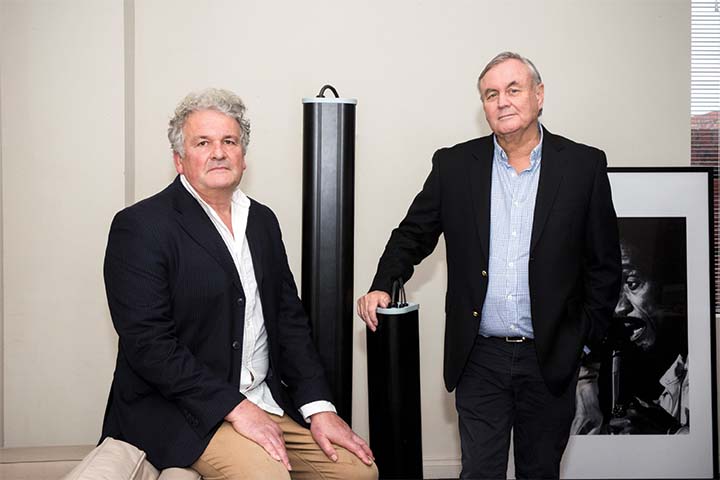by Dawson Johns, Managing Director, Zenaji
We have all heard of and seen the fires caused in Lithium-based batteries. The recent Tesla fire in Geelong, the fires in Griffith University, the Tesla car fires, the recall by LG of its Lithium batteries and the list goes on and on in Australia and worldwide.
In 2019 the Government introduced new rules around safety and the installation of lithium batteries in the home, but did nothing to examine what was causing the fires and the risk posed to human health.
Instead, it looked to regulate the control systems of batteries and their installation. They simply lumped all lithium batteries together as if they were all dangerous and all suffered from the same problems. They were wrong.
What is really happening and what consumers should be very wary of is that fires are almost exclusively caused by what is known as thermal runaway.

From left to right, Zenaji’s CTO, Charlie van Dongen, and Managing Director, Dawson Johns. Photo credit: Sarah Longshot – Longshot Images
Thermal runaway describes a process that is accelerated by increased temperature in turn releasing energy that further increases temperature.
Thermal runaway can be initiated from mechanical or thermal failures. Electro-chemical abuse from overcharging or over-discharging the cell can also start thermal runaway.
Also, here’s the possibility of an internal short circuit within the cell which leads to thermal runaway. Thermal runaway produces uncontrolled heat which leads to fire and or explosions of cells.
Once one cell suffers from thermal runaway it can, and usually does, very quickly spread to other cells around the initiating cell so the whole battery bank is engulfed in fire very quickly.
Certain chemistries such as Lithium Iron Phosphate (LFP) and Nickel, Manganese, Cobalt (NMC) batteries and variants of these chemistries are prone to spontaneous internal shorts that result in thermal runaway.
Despite the inherent dangers they are very energy dense, light weight and in high demand so battery manufacturers continue to produce them particularly for cars and mobile devices.
However, there is a lithium chemistry which is highly practical for stationary devices and does not suffer from thermal runaway unless massively overcharged.
This is commonly known as LTO chemistry or Lithium Titanate batteries. With proper management controlling their charge, these cells never suffer from thermal runaway.
Where safety is a consideration, such as in-home and business/commercial installations, this is the only Lithium chemistry that offers the level of safety needed now and into the future.
Interestingly, LTO cells provide storage and retrieval of power over their very long life at a much lower cost than other lithium batteries.
They can be charged and discharged many times more than their counterparts and will outlast all other current lithium chemistries by multiple times. Market penetration of LTO technology is growing.
Home storage systems using these cells is rapidly beginning to replace older less safe chemistries and it is expected that Government regulations will catch up with the technology advances and begin to limit the use in homes and business of LFP and NMC based batteries.
This sponsored editorial is brought to you by R&J Batteries. For more information, visit rjbatt.com.au.

















